Teething at 12 weeks: Are Amber Teething Necklaces Safe? Baby Teething Necklace Risks & Alternatives
I think the “newborn” (well, 12 week old baby) is teething!
- Date: December 5, 2015
- Author: Emm
Chewing on his hand
So i’ve got it into my head that maybe the “newborn” is teething; he’s actually now 12 weeks old and probably not newborn any more, though.
I thought this from around 10 or 11 weeks. Why? Well he’s chewing on his hands a lot and this behaviour has increased in the last few days. He’s slightly more drooly but that could just be from the increased sucking and chewing on back of his hand. I think that i’ve seen something that could be teeth under his gum, but i’m not 100% sure. My first-born, now nearly aged 2, got his first tooth around 4.5 months, and never looked back sprouting all his teeth apart from the back molars by the time he was one (here’s a link to all the teething posts from the first time around).
Of course, it might not be teething at all, afterall it feels a bit early.
I’m looking carefully around the space his bottom front teeth would be as they are apparently the first to come in according to sources such as the NHS on teething symptoms and how babies’ teeth emerge.
Some teeth grow with no pain or discomfort at all. At other times you may notice that the gum is sore and red where the tooth is coming through, or that one cheek is flushed. Your baby may dribble, gnaw and chew a lot, or just be fretful.
(NHS; link above)
As their teeth erupt, some babies may become fussy, sleepless and irritable, lose their appetite or drool more than usual. Diarrhea, rashes and fever are not normal for a teething baby. Prior to tooth eruption, the gingiva [baby-brain does not know what this is] may appear bluish and swollen as a result of a transient hematoma. In rare cases, an eruption cyst develops. The tooth will eventually rupture this watery sac as it pushes through the gums….
(pg 116;
Gugwad, S., Bommanavar, S.
, & Garud, S. (2012) Teething: A Relook. Int J Dent Case Reports, 2(5):115-120)
Baby with tooth
So how long do I have to wait and see if it is a tooth, or not?
Tooth eruption takes place during an 8-day window that includes 4 days before tooth eruption, the day of eruption and the 3 subsequent days
(Markman, 2009, cited in Memarpour, 2015)
Read more on “tooth eruption and teething in children” here
Other references:
- Markman L (2009). Teething: facts and fiction. Pediatr Rev, 30:59-64,
- Memarpour, M., Soltanimehr, E., & Eskandarian, T. (2015). Signs and symptoms associated with primary tooth eruption: a clinical trial of nonpharmacological remedies. BMC Oral Health, 15:88
Posted in: Age: Newborn & 0-3 months, Teething.
Tagged: 0-3 months, Newborn, teething, teething symptoms signs.
Last Modified: April 20, 2020
Blog and resource from a 1st time (update: now a 2nd time!… update again, now 3rd time!) mother and clinical psychologist – writing about things that look interesting with child & infant development, psychology, my mum/kids experiences, activities and play. 🤰🏻 🤱🏻👶🏻 👨👨👦 🎭 🤹🏻♀️ 💕
✉︎ [email protected] ✍︎
Blog Post Categories:
Blog Post Categories:Select CategoryAge: 12-18 months (11)Age: 18-24 months (8)Age: 2-3 years (4)Age: 3-4 years (3)Age: 3-6 months (14)Age: 6-9 months (15)Age: 9-12 months (10)Age: General Baby/Infant (41)Age: General toddler (17)Age: Newborn & 0-3 months (11)Age: preschooler (2)Baby Friendly London (3)Behavioural & Cognitive-Behavioural Psychology (10)Child physical health (2)Development (34)Feeding (5)Mental Health (3)Montessori (3)Motor Skills (16)Play & Activity (24)Potty/Toilet Training (3)Pregnancy (3)Psychological Research (12)Reading (4)Routines & Schedules (7)Sensory (9)Sleep (4)Talking & Speech (10)Teething (6)Tourist Baby (3)Uncategorized (13)Walking (1)Weaning (3)
When Do Babies Start Teething? Symptoms, Remedies, and More
Teething is when a baby’s teeth start to come through their gums.
You love watching your baby hit those sweet milestones — the first smile, first giggle, and rolling over for the first time. But one that’s sometimes not so sweet (for you or for them) is teething.
Although this is a typical part of growing for babies, it is one of those milestones that can bring discomfort, tears (from you and baby), and even sleepless nights (yep, more of those!).
As for when your baby will actually start the process, it depends.
A baby’s teeth can sometimes emerge with no pain or discomfort, so you might not realize they’re teething until you see the first sign of a tiny white tooth. For other babies, though, teething does cause discomfort.
Common symptoms of teething may include:
- drooling
- face rash from drooling
- chewing on different objects
- irritability and crankiness
- crying
- refusing to eat
- swollen, sore, or tender gums
- trouble sleeping
- flushed cheeks
- pulling on their ears
- slightly elevated temperature to around 99°F (37.
2°C)
Note
On the other hand, a rectal temperature 100.4°F (38°C) or higher, vomiting, or diarrhea are not usually signs of teething. If your baby has these symptoms, contact their pediatrician.
Symptoms of teething in breastfed babies
Teething symptoms can occur whether you breastfeed or bottle-feed your baby. But if you breastfeed or chestfeed, you might notice other changes, too. For example, gum pain or soreness might cause your baby to latch on differently.
Before a tooth emerges (and even afterward), you might feel your baby gnaw or bite down on your breasts. And since breastfeeding is soothing for babies, they might feed more often while teething.
Keep in mind that teething symptoms occur before a tooth breaks through the gum, so don’t be alarmed if you notice these changes in your baby but don’t see any sign of a tooth.
Most babies get their first tooth between 4 and 7 months old.
But there’s a wide range of when it’s considered “typical” to start teething.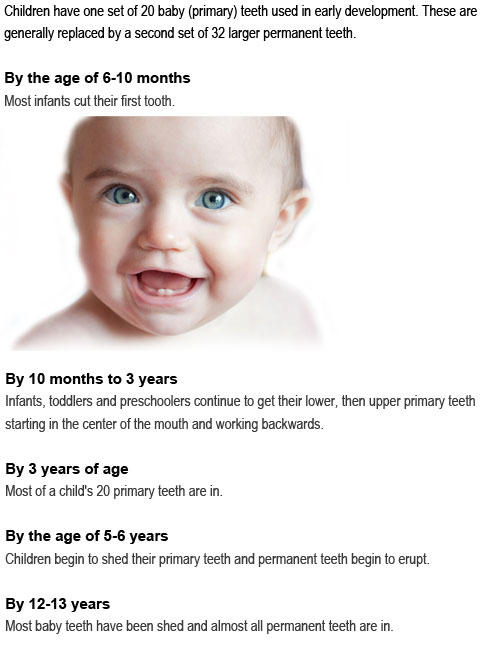
To get even more specific, most infants begin teething at around 6 months old. Your little one will likely have a full set of their first teeth by age 3, and all the joys of the teeth-brushing routine will have been long established.
But “typical” doesn’t mean “best” or “all.” Exactly when your baby will start teething may even be hereditary.
And though it may seem impossible, some babies are born with one or two teeth! This occurs in about 1 in 6,000 to 1 in 800 cases — so it’s uncommon. It makes for some incredibly adorable pictures, but let’s be honest — toothless grins are pretty darn cute, too.
Infants born with teeth should have them closely monitored since they can present a choking risk.
Some infants are early teethers — and it usually isn’t anything to worry about! If your little one starts showing signs of teething around 2 or 3 months old, they’re simply ahead of the curve in the teething department.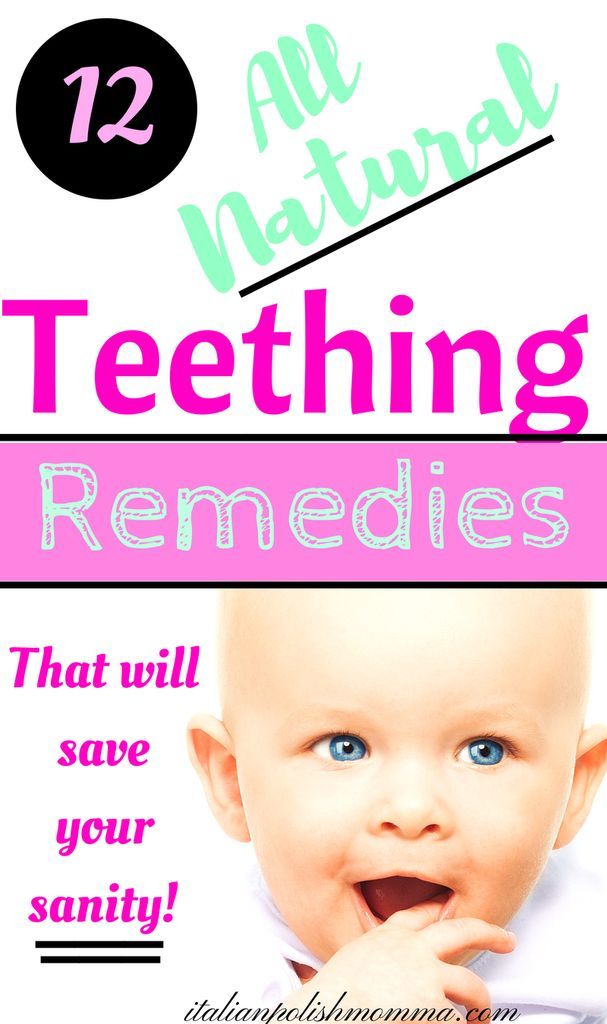
Every baby is different, so don’t be concerned if all your child’s little friends have started to cut teeth already — yours will too, in their own time. In fact, if you’re going to compare at all, it’s better to consider when their siblings (if they have them) got their first tooth.
The bottom two teeth are usually the first to appear, followed by the four upper teeth. So keep an eye on that area and prepare for cuteness overload when they do.
Next, their teeth may come in two at a time, one on each side of the mouth. But this pattern can vary, and many factors can influence the timeline (like if your baby was born early or at a low birth weight, for example).
On average, babies have:
- 4 teeth by 11 months
- 8 teeth by 15 months
- 12 teeth by 19 months
- 16 teeth at 23 months
Those sometimes distressing (but always perfectly usual) teething symptoms may come and go during this time period.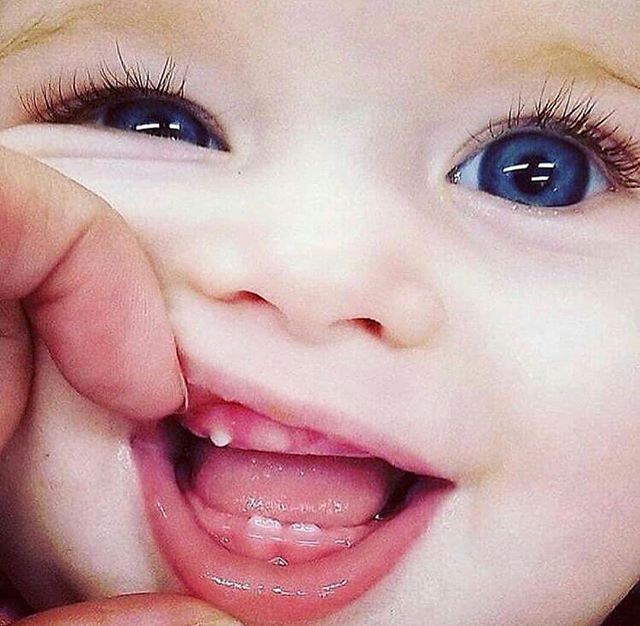
If your child doesn’t have any teeth by 18 months, see a pediatric dentist for evaluation. In rare cases, an underlying medical issue may cause a delay in teething. These may include:
- malnutrition
- vitamin deficiency
- underactive thyroid
If you’re concerned that it’s been a while since your child cut their last one or two teeth, speak with their pediatrician.
When your little one is teething, you may feel more inclined to reach for that bottle of wine or chocolate bar because it’s tough to see your baby in pain. (No? Just us?)
Well, baby needs some soothing, too.
Home remedies
These are some tried and true — and most importantly, safe — home remedies you can try:
- Gently massage your baby’s gums with a clean finger, knuckle, or moistened gauze pad.
- Hold a cold washcloth, spoon, or chilled teething ring on your baby’s gums.
- Use plastic or rubber toys that are chilled — never frozen solid (ouch!).
- Offer cold foods like a chilled little slice of cucumber if your baby is already eating solids — but always keep a watchful eye on them, because this could be a choking hazard.
Medical treatment
Currently, there aren’t any medical treatments to soothe teething pain in a baby. The good news, though, is that babies typically respond positively to home remedies.
If these remedies don’t relieve symptoms, feel free to ask your pediatrician about the occasional use of over-the-counter baby acetaminophen or ibuprofen.
Your pediatrician can advise whether this is an OK treatment and provide guidance on proper dosing.
And an important note: No matter how attractive the item or the claims of its manufacturers, avoid teething necklaces or bracelets — worn by adults or babies — made of amber, wood, or silicone. These can quickly turn into choking hazards, and it’s just not worth it.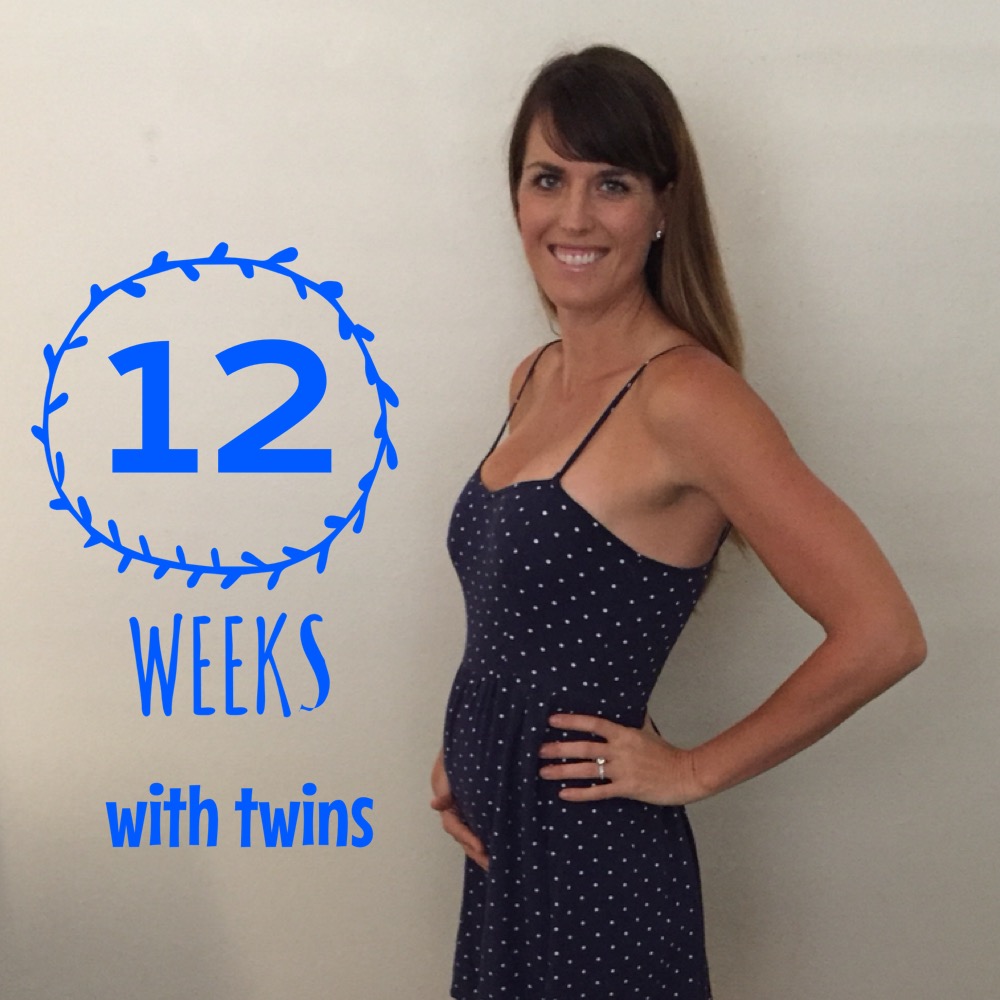
Also on the no-go list: homeopathic teething tablets and medicated topical gels. The Food and Drug Administration (FDA) has issued warnings against using both of these products.
Medicated topical gels contain the ingredient benzocaine, which is an anesthetic. It’s found in products like Anbesol, Orajel, Baby Orajel, and Orabase.
Benzocaine is linked to a rare but serious condition called methemoglobinemia.
Keep in mind that good oral health isn’t important for only older children, teens, and adults. Your baby’s oral health matters too. So start brushing those pearly whites as soon as the first tooth grows in.
How do you keep their tiny, delicate teeth healthy? There really isn’t much to do at this age, but the first step is to buy an infant toothbrush that is soft and gentle. You’ll brush their teeth twice a day, once in the morning and once at night.
And yes, it’s OK to use a fluoride toothpaste, but not too much. You only need a small grain-size amount until they’re 3 years old; then, increase to a pea-sized amount.
Brushing helps prevent tooth decay, which can occur when sugar from milk, juice, or formula remains on their teeth and damages the enamel.
Have questions about teething? Here are answers to a few frequently asked questions.
What are the first signs of teething?
The teething experience can differ for each individual baby, but some of the first signs include:
- drooling
- gnawing
- trouble sleeping
- irritability or crying
- a mild increase in body temperature
Some babies also develop flushness around their cheeks or a rash. And if you breastfeed or chestfeed, teething might change the way your baby latches, or they might feed more often to soothe themselves.
How early do babies show signs of teething?
Teething typically occurs around 6 months of age. However, some babies start teething as early as 2 or 3 months. Then again, some babies teeth later and don’t cut their first tooth until 8 or 9 months (or later).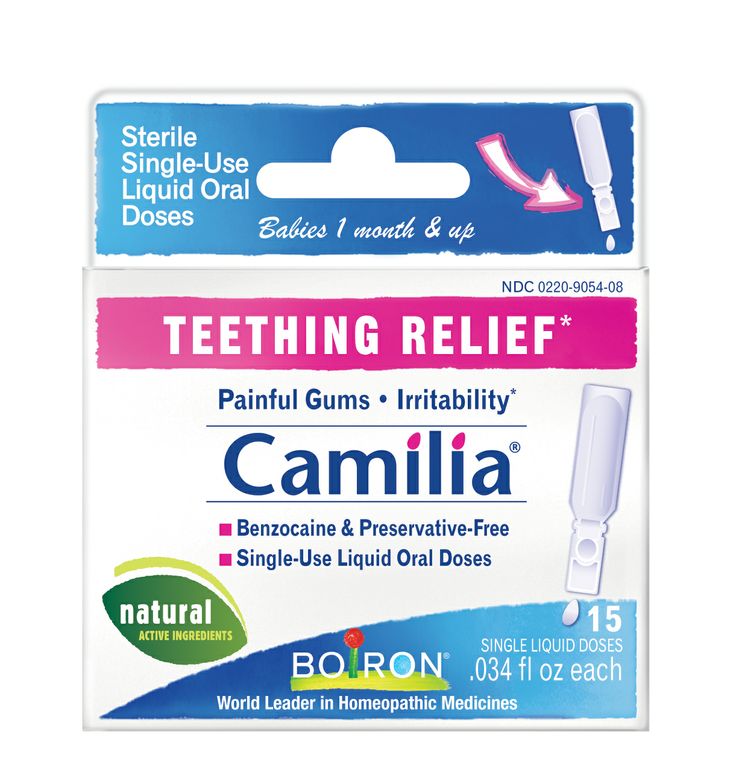
How long does teething last for babies?
The teething timeframe differs for each baby. But regardless of whether a baby starts teething at 6 months or 9 months, they typically stop teething before age 3. Some babies stop teething around 24 months, while others don’t stop until 36 months.
Do babies get sick when teething?
Even though your baby may have physical discomfort, teething doesn’t make them sick. So if your baby has a runny nose, productive cough, diarrhea, vomiting, or a high fever, these symptoms aren’t associated with teething. This could be a sign of an infection, so speak with their pediatrician.
When your baby cuts their first tooth usually says nothing about their development — as with most things baby, there’s such a wide range of totally OK. Most infants end up with a full set of baby teeth by the time they’re 3 years old, regardless of when they cut that first tooth.
But if your baby hasn’t cut a tooth by the time they’re 18 months old, talk with your dentist.
So if you haven’t seen a dentist yet, this would be a good time to have your sweet babe’s mouth and gums checked out.
While visiting the dentist for the first time may sound scary, remember these two things: Your baby hasn’t yet had a negative dental experience to create dread, and pediatric dentists are great at making the visit comfortable — it can even be even fun.
Once your little one does cut a tooth or two, be sure to take good care to clean around the area each day with a damp, cool washcloth or soft-bristle baby toothbrush. Before you know it, they’ll (hopefully!) be brushing their teeth on their own.
Teething in a child: timing, care, ways to relieve pain
Children will definitely appreciate the parental contribution to maintaining dental health when they grow up.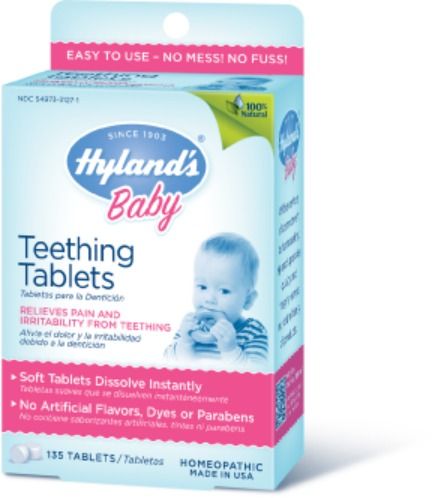
Teeth development before eruption
The health of your baby’s teeth should be taken care of long before they erupt. It is useful for expectant mothers to know that the rudiments of milk teeth are formed already at the 7-8th week of intrauterine development, and permanent ones at the end of 4 months. Not just teething timing, but even level enamel mineralization both milk and molars depends on how the pregnancy proceeds. Therefore, it is so critical that a woman receives all the vitamins, microelements and is as healthy as possible.
But not only food is important. The results of the research showed that in the presence of industrial harmful substances in the environment of the expectant mother during pregnancy and numerous stressful situations, the formation of all dental tissues is disrupted in the child and the timing of the appearance of milk teeth is shifted.
Why baby teeth are needed
Nature has conceived the correct order and timing of teething in children. Evolutionarily, this is due to the need to form the bite and jaw bones for chewing and speech. Over the years, the bones grow, and the milk teeth, which at the beginning of their appearance fit snugly against each other, diverge by the age of 6-7, forming wide, natural interdental spaces for this period – tremas and diastemas.
There are only 20 teeth in the milk bite.
Proper growth and health of milk teeth help:
-
rebuild the body from lactophoric to a mixed type of nutrition;
-
reserve space for the normal positioning of future molars;
-
form a mixed bite.
There is an erroneous opinion that milk teeth in case of infection with caries can not be treated, but immediately removed. But modern dentists are against such tactics. Early removal is fraught with displacement of neighboring milk teeth and the appearance of problems already with an adult bite. Therefore, it is so important to maintain the presence and health of all milk teeth until the moment when permanent teeth erupt on their own [3] .
The structure of milk teeth
Temporary teeth have thinner enamel, and their internal pulp cavity is larger compared to permanent ones. All this makes the tooth lighter, which helps with the eruption of permanent teeth, but at the same time accelerates the development of caries and pulpitis. However, there are bonuses: by the time the molars begin to erupt, which will remain with the child until the end of life, the roots of milk teeth even dissolve to ensure their rapid and relatively painless loss.
Terms of eruption of milk teeth
Teething is a genetically programmed event that occurs at a certain period. Physiological teething is characterized by three main features: certain timing, pairing and sequence of teething. Galaktionova M. Yu.
Children’s milk teething rates differ depending on their ethnicity. But as studies show, in general, the world is experiencing a reduction in the time from birth to the moment when the first tooth appears.
Causes of violation of the order and timing of teething in children can be:
-
heredity;
-
climatic conditions;
-
nature of feeding;
-
certain diseases, such as rickets.
The eruption rates for milk teeth according to the American Dental Association are presented in the table.
|
Baby teeth |
Upper jaw eruption / month |
Lower jaw eruption / month |
|
Center cutter |
8-12 |
6-10 |
|
Lateral cutter |
9-13 |
10-16 |
|
Fang |
16-22 |
17-23 |
|
First molar |
13-19 |
14-18 |
|
Second molar |
25-33 |
23-31 |
The specified periods are average indicators, varying depending on individual and family characteristics [4,5] .
Teething aid
The appearance of milk teeth is not an easy process not only for the children themselves, but also for their parents. The most common teething symptoms:
-
swelling and redness of the gums;
-
excessive salivation;
-
itching and urge to keep hands, toys in mouth;
-
capriciousness of a child;
-
sleep disorder;
-
refusal to breast, bottle or complementary foods;
-
temperature increase;
-
stool disorders;
-
runny nose.
The following will help you get through this period as comfortably as possible:
-
special teething rings that relieve itching, especially with a cooling effect;
-
local anesthetic dental gels;
-
antipyretic and analgesic preparations;
Gentle silicone fingertip massage to soothe and relieve your baby [6]
Baby Teeth Care
Once the first tooth has erupted, don’t put off going to the dentist.
Proper care at home is important.
-
Milk teeth are suitable for an ultra-soft toothbrush with a small head.
-
Children’s mouth rinses are used from about 4 years old or from the time the child can spit.
-
Parents should supervise the brushing of preschool children’s teeth and, if necessary, help and clean missed areas.
-
Adults should teach their children to rinse their mouth after meals from a very young age.
-
Until the child has learned to spit on his own, toothpaste should not contain fluorides.
-
A bathroom timer or a favorite song helps you stick to the 2-minute brushing time.
-
Solid food should be included in the diet daily in sufficient quantities to properly form the bite and stimulate the gums.
These simple tips help keep baby teeth healthy from the very beginning until they are naturally replaced by permanent teeth.
List of sources
-
Izmestieva OV, Galaktionova M. Yu., Manashev GG Characteristics of exogenous and endogenous factors affecting the eruption of temporary teeth in children. 2012 // https://cyberleninka.ru/article/n/harakteristika-ekzogennyh-i-endogennyh-faktorov-vliyayuschih-na-prorezyvanie-vremennyh-zubov-u-detey (date of access: 21.02.2020)
-
Galaktionova M. Yu., Izmest’eva OV Timing of eruption of temporary teeth and the nature of feeding children in the first year of life. 2012 // https://cyberleninka.ru/article/n/sroki-prorezyvaniya-vremennyh-zubov-i-harakter-vskarmlivaniya-detey-pervogo-goda-zhizni (date of access: 02/21/2020)
-
Iordanishvili AK, Korovin NV, Serikov AA Anatomical and topometric characteristics of the jaws during eruption and retention of wisdom teeth.
2017 //https://cyberleninka.ru/article/n/anatomo-topometricheskie-harakteristiki-chelyustey-pri-prorezyvanii-i-retentsii-zubov-mudrosti (Accessed: 02/21/2020)
-
Bimbas ES, Saipeeva MM, Shishmareva AS Timing of eruption of permanent teeth in children of primary school age. 2016 //https://cyberleninka.ru/article/n/sroki-prorezyvaniya-postoyannyh-zubov-u-detey-mladshego-shkolnogo-vozrasta (date of access: 02/21/2020)
-
Shilova N., Berzina S., Brinkmane A., Dulevska I., Umbraszko S., Briede I. Timing and sequence of eruption of primary teeth and factors influencing them. 2017 // https://cyberleninka.ru/article/n/sroki-i-posledovatelnost-prorezyvaniya-molochnyh-zubov-i-vliyayuschie-na-nih-faktory (date of access: 02/21/2020)
-
Bogdanova NA, Zueva TE How to help a child with teething? A new look at an old problem. 2019 // https://cyberleninka.ru/article/n/kak-pomoch-rebenku-pri-prorezyvanii-zubov-novyy-vzglyad-na-staruyu-problemu (date of access: 02/21/2020)
-
Ayupova FS Tactics of treatment of children with anomalies in the eruption of permanent posterior teeth.
2013 // https://cyberleninka.ru/article/n/taktika-lecheniya-detey-s-anomaliyami-prorezyvaniya-postoyannyh-bokovyh-zubov (date of access: 21.02.2020)
-
Gatalsky VV Control of the mesiodistal size of the dentition as one of the aspects of the prevention of dental anomalies. 2005 // https://cyberleninka.ru/article/n/kontrol-meziodistalnogo-razmera-zubnogo-ryada-kak-odin-iz-aspektov-profilaktiki-zubochelyustnyh-anomaliy (date of access: 21.02.2020)
Which teeth erupt first – Dr. Lapchenko Dental Clinic
A baby has appeared in the house. The first fears and worries passed, the pediatrician came for an examination and informed the young parents that the child was completely healthy. They even coped with the first difficulties: with colic, they “saved” my mother’s warmth and good old dill water. Sleepless nights are over and it’s time to relax and enjoy watching your baby grow? Alas, a new test awaits parents ahead: the child’s teeth begin to cut.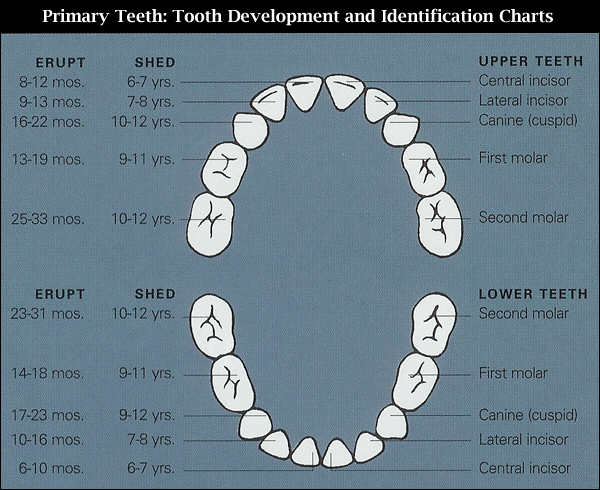
How to “survive” this difficult period, what you should remember and how you can help your child, we will tell in this article.
When teething starts
Your child’s future teeth are formed during the prenatal period, during the second month of pregnancy. When should you expect the first tooth? As a rule, the first milk teeth appear in children at the age of 4-7 months. We say “usually” because teething is an exclusively individual process and it is not worth worrying about the fact that teeth do not appear “on schedule”. There are cases when a child is already born with the first teeth, and sometimes the teeth can wait until the first Birthday of your crumbs.
What determines the timing of teething
Teething a little earlier or later than the average set period of 6 months is not a cause for concern. The timing of the “exit” of the tooth from the gums can depend on factors such as the mother’s diet during pregnancy, the individual characteristics of the child, and even heredity.
Graph of the appearance of teeth in babies
And yet, while waiting for the first tooth, I want to focus on some dates. As we said above, it is worth preparing for 4-7 months.
Which teeth come in first
- teeth usually start to erupt from the lower central incisors, they erupt in pairs. Then the upper central incisors erupt. By 8 months, 4 incisors usually appear – two in each jaw;
- by 12 months, lateral incisors erupt on both jaws;
- after the incisors, the first large molars, or molars, appear. They should be expected by the age of 12-16 months;
- behind them – fangs, at 16-20 months;
- and the last, by the age of two, the second molars are born.
Remember that your baby may have a different “formula” for teething. Violation of the timing and order of the appearance of teeth is not a sign of some kind of pathology.
There are 20 milk teeth in total, and by the age of three, most children can already boast of a complete set.
Teething symptoms
The timing has been determined. How to understand that baby is teething? Forerunners of this are characteristic symptoms:
- tearfulness and restlessness;
- sleep disturbance;
- profuse salivation;
- rashes and irritations of the skin around the mouth;
- temperature increase;
- inflammation of the gums;
- coryza;
- cough;
- diarrhea.
The combination of several or even all of these symptoms is characteristic of teething. As you can see, the manifestations are not at all specific, and can accompany many other diseases. That is why it is important to see a doctor if the child’s condition does not improve within three days, or if the temperature rises above 38.5-39°C. Attributing childhood ailments to the teeth, it is very easy to “miss” an infectious or viral disease – be careful.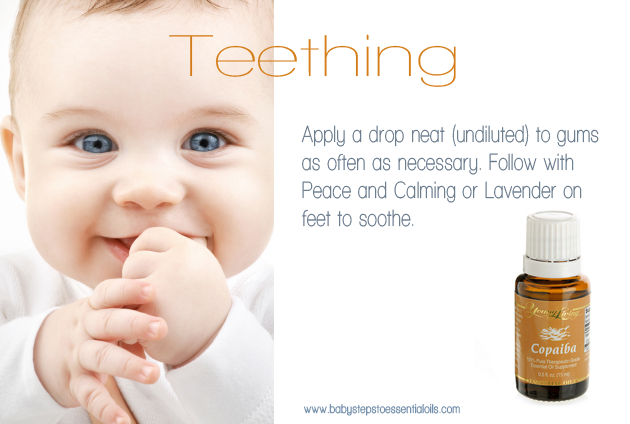
Let’s take a closer look at some of the most frightening symptoms that accompany teething and the causes that cause them.
Inflammation of the gums
The gums become “loose” and change color. Bumps, bruises and light streaks are sure signs that your child will soon delight you with a new tooth.
Fever
The temperature usually rises slightly – up to 37.5 ° C. If the numbers on the thermometer reached the level of 38.5-39 ° C, most likely an infection has joined. In this case, it is necessary to give the baby an antipyretic and consult a doctor as soon as possible.
Runny nose
Profuse salivation is not the only manifestation of teething. Just as the mucous membrane of the mouth reacts, so does the nose. Hence the runny nose. If a three-month-old baby has small amounts of transparent snot, the reason is most likely in the teeth. Do not try different medicines. It is enough just to regularly clean the clogged nose. There can be two reasons to see a doctor with a runny nose:
- runny nose continues and does not decrease for three days;
- nasal discharge has ceased to be transparent, and has become greenish – this may indicate that a bacterial infection has appeared against the background of a weakened immune system.
Cough
Cough is caused by saliva that collects in the throat. The fact is that in children the swallowing reflex is not sufficiently developed and with a large volume of liquid, children begin to cough it up. With cutting teeth, the cough is wet, rare and does not last more than 3-4 days. A dry, irritating mucous membrane and a prolonged cough is a definite reason to make an appointment with your pediatrician.
Diarrhea
Oddly enough, but violations of the excretory function are also caused by strong salivation. Constantly swallowing, the child thereby stimulates the peristalsis of his intestines, which causes a loosening of the stool. Diarrhea with cutting teeth is not very liquid, without blood threads and does not last more than two days. If something has alerted you – do not hesitate to contact the doctor.
Which teeth come out first, how to help your child
When teeth come out , your baby changes dramatically.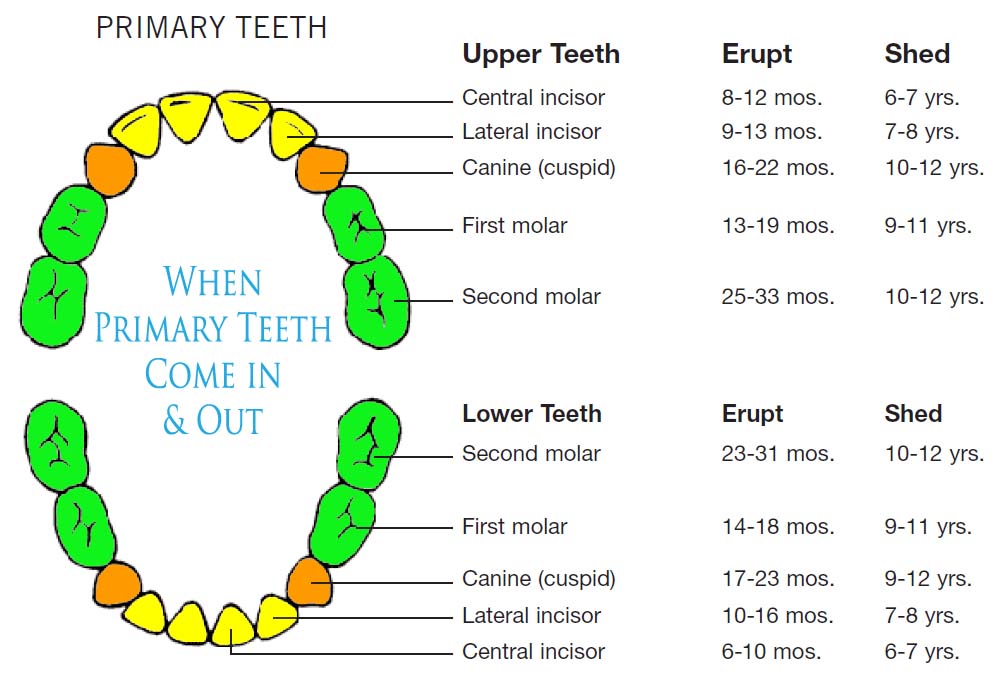
Remedies for symptoms: how to relieve pain
The process of teething does not take one day, but can stretch for weeks. That is why it is so important to replenish your first-aid kit in advance with products that will help your child to endure unpleasant sensations more easily, and you to remain calm.
- Is the appearance of new teeth accompanied by high fever? It is worth stocking up on special dental gels (Kamistad-gel), which have a cooling and local anesthetic effect. You can use the gels from the age of four months, and, depending on the composition, apply up to 5-6 times a day.
- Has the temperature risen? Children’s antipyretics based on ibuprofen (Nurofen) or paracetamol (Panadol) will not only lower the temperature, but also reduce the severity of the inflammatory process. Please note: teeth rarely give a very high temperature. If you see numbers above 39 ° C on your baby’s thermometer, call your doctor immediately.
- If for some reason a child cannot take medicines, homeopathy comes to the rescue. Good results in teething are also given by homeopathic suppositories (Viburkol) and sucking tablets (Dormikind).
- Do not forget about the “grandmother’s” methods. Cool items (from special teethers to a regular spoon) can significantly alleviate the child’s condition.







 , & Garud, S. (2012) Teething: A Relook. Int J Dent Case Reports, 2(5):115-120)
, & Garud, S. (2012) Teething: A Relook. Int J Dent Case Reports, 2(5):115-120)
 2°C)
2°C) 

 2017 //https://cyberleninka.ru/article/n/anatomo-topometricheskie-harakteristiki-chelyustey-pri-prorezyvanii-i-retentsii-zubov-mudrosti (Accessed: 02/21/2020)
2017 //https://cyberleninka.ru/article/n/anatomo-topometricheskie-harakteristiki-chelyustey-pri-prorezyvanii-i-retentsii-zubov-mudrosti (Accessed: 02/21/2020)  2013 // https://cyberleninka.ru/article/n/taktika-lecheniya-detey-s-anomaliyami-prorezyvaniya-postoyannyh-bokovyh-zubov (date of access: 21.02.2020)
2013 // https://cyberleninka.ru/article/n/taktika-lecheniya-detey-s-anomaliyami-prorezyvaniya-postoyannyh-bokovyh-zubov (date of access: 21.02.2020) 
